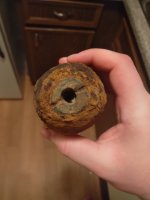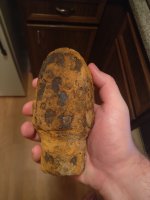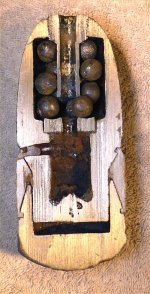EnvoyToTheMolePeople
Sr. Member
- Oct 1, 2018
- 429
- 662
- Detector(s) used
- Garrett AT Max
- Primary Interest:
- All Treasure Hunting
I bought this shell with some misc civil war artifacts for $2 at an auction. Could abybody tell me what kind of shell it is? Also, can I clean it with evaporust?









